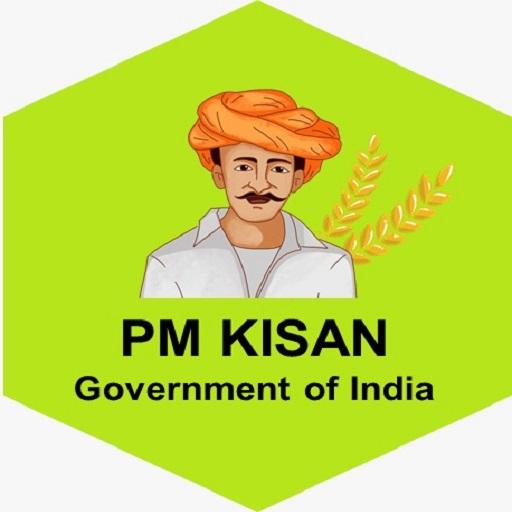In a nation where agriculture sustains millions of livelihoods, initiatives aimed at bolstering the agricultural sector are of paramount importance. The Pradhan Mantri Kisan Samman Nidhi (PM-Kisan) scheme, launched in February 2019, represents a significant step towards empowering farmers and enhancing rural prosperity. This article provides a comprehensive examination of the PM-Kisan scheme, delving into its objectives, implementation mechanism, impact, challenges, and future prospects.
Objectives of PM-Kisan: The primary objective of the PM Kisan scheme is to provide direct income support to small and marginal farmers across India. Under the scheme, eligible farmers receive financial assistance of ₹6,000 per year in three equal installments. This support aims to augment farmers' financial capabilities, address immediate agricultural needs, and act as a safety net during times of distress.
The scheme seeks to alleviate rural poverty, reduce income disparities, and enhance the socio-economic well-being of farmers. By providing timely financial assistance, PM-Kisan aims to improve farmers' access to essential inputs, technology, and market opportunities, thereby catalyzing agricultural growth and rural development.
Implementation Mechanism: PM-Kisan operates under a decentralized implementation framework, with responsibilities shared between the central and state governments. The scheme leverages technology, including Aadhaar-enabled databases and bank account linkage, to identify and verify eligible beneficiaries. State governments play a crucial role in the verification, registration, and dissemination of funds to farmers within their jurisdiction.
The scheme's reliance on direct benefit transfer (DBT) ensures transparency, accountability, and efficiency in fund disbursement. By eliminating intermediaries, PM-Kisan streamlines the delivery of financial assistance, ensuring that farmers receive their entitlements directly and promptly. The use of digital platforms enhances the speed and accuracy of transactions, minimizing leakages and corruption.
Impact on Farmers: Since its inception, the PM-Kisan scheme has made a tangible difference in the lives of millions of farmers across India. By providing direct income support, the scheme helps farmers meet their immediate agricultural expenses, including purchasing seeds, fertilizers, and other inputs. This financial assistance acts as a cushion during times of crop failures, natural disasters, or market fluctuations, reducing farmers' vulnerability to economic shocks.
Moreover, PM-Kisan contributes to enhancing farmers' purchasing power, thereby stimulating rural consumption and economic growth. The scheme empowers women farmers and marginalized agricultural communities by providing them with equal access to financial resources. By bridging the gap between income and expenditure, PM-Kisan enables farmers to make informed decisions regarding crop cultivation, resource management, and investment in agricultural practices.
Challenges and Limitations: Despite its significant impact, the PM-Kisan scheme faces several challenges and limitations that warrant attention. One major challenge is the identification of eligible beneficiaries, as discrepancies in land records and outdated databases can lead to exclusion errors. Ensuring accurate and up-to-date databases is crucial for effective targeting and equitable distribution of benefits.
Another challenge is the inadequate coverage of tenant farmers, sharecroppers, and landless agricultural laborers, who often lack formal documentation or land titles. Expanding the scope of PM-Kisan to include these vulnerable groups requires innovative solutions and close coordination between the central and state governments.
Furthermore, the scheme's reliance on digital infrastructure may pose accessibility barriers for farmers in remote or underprivileged areas with limited internet connectivity and financial literacy. Addressing these challenges requires concerted efforts to strengthen rural infrastructure, promote digital literacy, and enhance outreach mechanisms.
Future Prospects and Recommendations: To maximize the impact of the PM-Kisan scheme and address existing challenges, several recommendations can be considered:
- Strengthening Data Infrastructure: Regular updates and Aadhaar seeding to improve beneficiary identification and targeting precision.
- Inclusive Coverage: Innovative mechanisms to include tenant farmers, sharecroppers, and landless agricultural laborers in the scheme.
- Awareness and Outreach: Extensive awareness campaigns and capacity-building programs to educate farmers about the scheme's benefits and application process.
- Convergence with Other Schemes: Promotion of convergence between PM-Kisan and other agricultural development programs to enhance synergies and holistic support.
- Monitoring and Evaluation: Robust mechanisms to track implementation progress, assess impact, and identify areas for improvement.
Conclusion: The PM Kisan Status scheme represents a transformative initiative aimed at empowering India's farmers and enhancing rural prosperity. While the scheme has made significant strides in providing direct income support to farmers, addressing implementation challenges and expanding coverage to vulnerable groups are imperative for its long-term success. With continued efforts and innovation, PM-Kisan can serve as a catalyst for agrarian prosperity, inclusive growth, and sustainable rural development in India.

